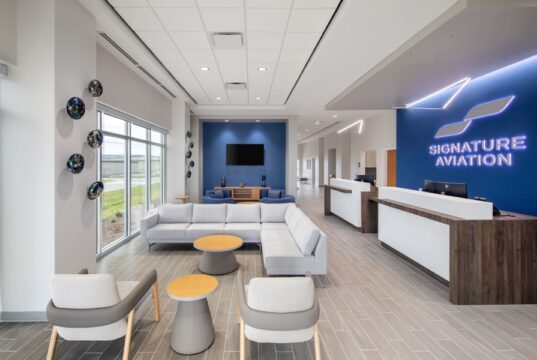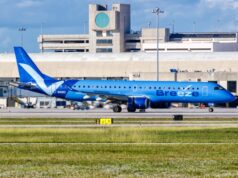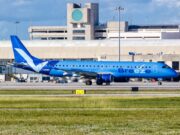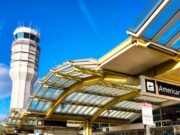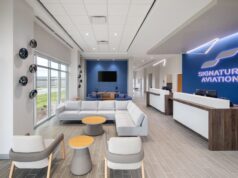- “United Next” includes addition of 200 Boeing 737 MAX and 70 Airbus A321neo as well as plans to retrofit 100% of remaining mainline, narrow-body fleet to transform the customer experience and create a new signature interior – a roughly 75% increase in premium seats per North American departure, larger overhead bins, seatback entertainment in every seat and industry's fastest available WiFi;
- United will increase the total number of available seats across its domestic network by almost 30% per departure and replace at least 200 single-class regional jets with larger mainline aircraft;
- Order expected to create 25,000 well-paying, unionized jobs at United, significantly lower carbon emissions per seat and contribute an estimated $50 billion annually towards the U.S. economy by 2026;
- When combined with the airline's current order book, United expects to add more than 500 new aircraft including about one new plane every three days in 2023 alone
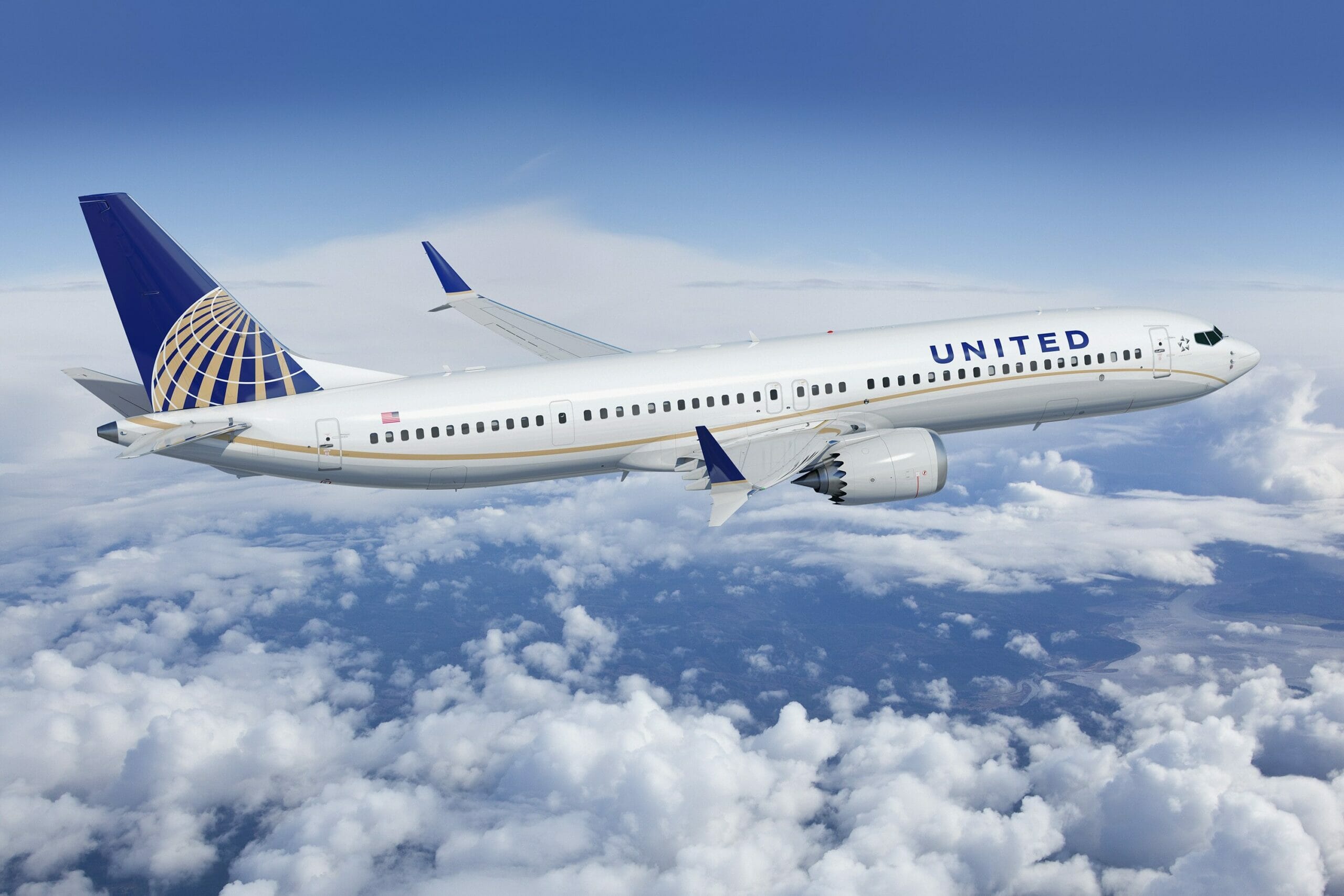
United Airlines today announced the purchase of 270 new Boeing and Airbus aircraft – the largest combined order in the airline's history and the biggest by an individual carrier in the last decade. The ‘United Next' plan will have a transformational effect on the customer experience and is expected to increase the total number of available seats per domestic departure by almost 30%, significantly lower carbon emissions per seat and create tens of thousands of quality, unionized jobs by 2026, all efforts that will have a positive, ripple effect across the broader U.S. economy.
When combined with the current order book, United expects to introduce more than 500 new, narrow-body aircraft: 40 in 2022, 138 in 2023 and as many as 350 in 2024 and beyond. That means in 2023 alone, United's fleet will, on average, add about one new narrow-body aircraft every three days.
United's new aircraft order – 50 737 MAX 8s, 150 737 MAX 10s and 70 A321neos – will come with a new signature interior that includes seat-back entertainment in every seat, larger overhead bins for every passenger's carry-on bag and the industry's fastest available in-flight WiFi, as well as a bright look-and-feel with LED lighting. The airline expects to fly the first 737 MAX 8 with the signature interior this summer and to begin flying the 737 MAX 10 and the Airbus A321neo in early 2023.
What's more, United intends to upgrade 100% of its mainline, narrow-body fleet to these standards by 2025, an extraordinary retrofit project that, when combined with the number of new aircraft joining the fleet, means United will deliver its state-of-the-art inflight experience to tens of millions of customers at an unprecedented pace.
This order will also significantly boost United's total number of mainline daily departures and available seats across the airline's North American network, as well as the number of premium seats, both United FirstSM and Economy Plus®. Specifically, United expects it will have on average 53 premium seats per North American departure by 2026, an increase of about 75% over 2019, and more than any competitor in North America.
“Our United Next vision will revolutionize the experience of flying United as we accelerate our business to meet a resurgence in air travel,” said United CEO Scott Kirby. “By adding and upgrading this many aircraft so quickly with our new signature interiors, we'll combine friendly, helpful service with the best experience in the sky, all across our premier global network. At the same time, this move underscores the critical role United plays in fueling the broader U.S. economy – we expect the addition of these new aircraft will have a significant economic impact on the communities we serve in terms of job creation, traveler spending and commerce.”
United expects to create approximately 25,000 well-paying, unionized jobs at the airline as a result of adding these new aircraft and, based on a study from the Federal Aviation Administration, the airline expects to drive more than $30 billion in traveler spending when flying United and contribute an estimated $50 billion annually towards the U.S. economy by 2026.
Plus, adding these new 737 MAX and Airbus A321neo aircraft means United will replace older, smaller mainline jets and at least 200 single-class regional jets with larger aircraft, which the airline expects will lead to significant sustainability benefits compared to older planes: an expected 11% overall improvement in fuel efficiency and an expected 17-20% lower carbon emission per seat compared to older planes.
The best customer experience in the industry
United's new aircraft reflect a vastly improved customer experience standard – United's signature interior – that places a premium on the overall comfort of flying – more overall available seats in the market, more premium seats on each aircraft, as well as better entertainment, overhead storage and technology features. These standards will be applied to the airline's retrofit plan – a nose-to-tail transformation of its mainline, narrow-body fleet – that is expected to be 66% complete by 2023 and 99% complete by the summer of 2025.
United's new narrow-body jets will help the airline increase its total seats per departure for North American flights by 30 seats, or almost 30%, by 2026. At the same time, the airline will quickly grow the number of United FirstSM and Economy Plus® seats for customers seeking an elevated experience.
United's 737 MAX 8 has 16 United FirstSM seats and 54 Economy Plus® seats – more than double the number of extra leg room seats offered by competing airlines on similar-sized aircraft. The 737 MAX 10 – the largest member of the MAX family – makes up the majority of United's new order and will include 20 United FirstSM seats and 64 Economy Plus® seats and the new A321neo aircraft are expected to have a United FirstSM and Economy Plus® seat count similar to that of the 737 MAX 10.
By flying bigger jets with a signature interior that includes more premium seating, United will give customers more choice when selecting their onboard experience, provide MileagePlus® members more opportunity for upgrades, and position United to better meet the demand among United's business customers while creating even more connectivity to its global long-haul network, helping to fuel growth to all corners of the world.
“We'll deliver a better, more consistent experience, with more features for more customers, faster than ever. While some airlines are reducing the number of economy seats with extra leg room, United will offer the most premium seats in North America, taking a different, more customer-friendly approach,” said Andrew Nocella, United's EVP and Chief Commercial Officer. “This is United playing to our strengths – the location of our U.S. hubs means we're uniquely positioned to focus on premium products, business travel and global flying like no other U.S. airline. Our new, signature interior creates a more consistent product across our mainline fleet – with a focus on the amenities that customers value most like seat back screens, fast WiFi and extra storage – to further set ourselves apart.”
United's inflight entertainment – 13-inch high-definition screens in every first class seat and 10-inch HD screens in every United Economy seat on the 737 MAX – includes free access to more than 2,800 selections including movies, TV shows and international selections, as well as audio playlists, podcasts, and games. Customers also can watch documentaries and live concerts through United's exclusive collaboration with the Coda Collection. Plus, every seat on these aircraft has access to electrical power and USB charge ports and provides a seatback experience with accessibility features for people with hearing or visual disabilities.
Each new 737 MAX and A321neo will have the industry's fastest available in-flight WiFi that lets customers stream video from online services. The aircraft also will have Bluetooth technology throughout for easy connections between wireless headphones and the seatback entertainment screens.
United's new, significantly larger overhead bins will provide space for one carry-on bag for every person onboard, addressing several of the biggest pain points among customers and employees. United expects that the availability of these larger bins will help alleviate gate crowding and anxiety, reduce the number of gate-checked bags and decrease the time it takes to board.
More Flights, New Destinations
United's plan to add hundreds of signature interior narrow-body aircraft to its fleet will give customers access to more modern seats and planes while reducing flights that use smaller, single-class regional jets. These new aircraft also will give customers even more options to fly between U.S. cities, including some new destinations, when they travel through the airline's major U.S. hubs. Finally, the larger mainline fleet will help accelerate United's plans to expand service in partnership with local airport authorities across the United States.
Impact in Newark/NYC
United expects to resume its full schedule of flights out of Newark by November 2021 when the FAA slot waiver period ends. The airline is already the leading carrier from Newark – United's largest global gateway – with 430 daily flights that include international destinations like Johannesburg, Tel Aviv, Mumbai and Hong Kong.
United expects the number of Newark departures on mainline aircraft to increase from 55% in 2019 to 70% by 2026. And by late 2021, United expects 100% of Newark departures to be on dual-class aircraft, including the 737 MAX and the airline's new, dual-class 50-seat CRJ-550 jet. Today's aircraft order means the airline can create quality, union jobs, as well as grow domestic and international capacity from Newark for years to come by replacing smaller mainline jets with larger aircraft, while at the same time driving international growth, by connecting more customers from U.S. cities to Newark/NYC for their international flights.
United is in the midst of a significant facility expansion and upgrade project at Newark. The work includes renovating an existing United ClubSM location in Terminal C, building a completely new lounge in Terminal C that is capable of accommodating 500 travelers and will have panoramic views of Manhattan, as well as building a brand new United Club in Terminal A where United will operate from 12 new gates.
Jobs
Today, the airline supports about 68,000 union jobs – 89% of the airline's total domestic workforce.
All United employees – even part-time workers – earn more than the federal minimum wage, are eligible to receive company-sponsored medical coverage, participate in company-funded retirement programs like 401(k)s and receive paid sick leave, paid vacation and flight privileges when space is available to destinations around the world. Plus, these jobs offer opportunities for career growth – about 69% of the airline's senior leaders were internally promoted and more than 1,500 frontline employees have been promoted into management roles in the past seven years.
“The addition of these 270 new aircraft and reduction of single-class regional jets is not only good news for customers, it is excellent news for the 12,000 current United pilots, and the 10,000 more we expect to hire before the decade is out,” said United ALPA Chair Capt. Todd Insler. “This is exactly what we planned for when we reached our industry-leading pandemic recovery agreement last year and kept United pilots on the property, trained and ready to take advantage of the rapid recovery in passenger demand. With the strength of our network, fleet, and pilot compensation, we are sure United will remain the destination of choice for the most highly qualified airline pilots.”
United's new aircraft order is expected to create about 25,000 well-paying, unionized jobs by 2026, including the following at each of the airline's seven, major U.S. hubs:
- Newark / EWR: up to 5,000 jobs
- San Francisco / SFO: up to 4,000 jobs
- Washington, D.C. / IAD: up to 3,000 jobs
- Chicago / ORD: up to 3,000 jobs
- Houston / IAH: up to 3,000 jobs
- Denver / DEN: up to 3,000 jobs
- Los Angeles / LAX: up to 1,400 jobs
United has contracts in place with the following unions and these descriptions provide an overview of each frontline group as well as salary details for each position:
- Contact Center, Ramp and Customer Service Agents (represented by IAM): United employed about 28,000 agents in 2019 – 14,000 who help load each aircraft, 12,000 customer service representatives in airports and 3,000 contact center agents (including about 900 based at the airline's Houston Reservation Center and 700 at United's Chicago facility) who help customers find the best option for their travel. Most of these jobs include entry-level opportunities for people directly out of high school and college, and their combined wages and benefits in 2019 totaled more than $90,000 at the top of their pay scale. Several of United's top leaders started out working on the ramp or in customer service, including United's current Senior Vice President of Airport Operations who started on the ramp, the airline's Vice President of San Francisco, who started as a customer service agent and United's current Managing Director of Customer Care, who started as a lead travel consultant.
- Dispatchers (represented by PAFCA): United has 400 dispatchers and in 2019 their combined wages and benefits totaled more than $200,000 at the top of their pay scale. These positions are certified by the FAA and share joint responsibility with the captain for the safe operation of every United flight. The airline has many dispatchers working in United's Network Operations Center who came from positions across the company including agents and management positions.
- Flight Attendants (represented by AFA): United had about 24,000 active flight attendants in 2019 and their combined wages and benefits totaled more than $90,000 at the top of their pay scale. With the unique ability to see the world while working, it's no surprise that flight attendant jobs are highly desired. In 2019, United had over 65,000 applicants for fewer than 1,500 flight attendant positions. New hires go through a six-week training course at United's Houston Training Center and visit one of the airline's seven training facilities every year to keep their skills fresh. Additionally, those interested in becoming a flight attendant do not require special schooling or a college degree and are fully trained once hired. United's current Senior Vice President of Inflight Services started as a flight attendant.
- Pilots (represented by ALPA): United has about 12,000 pilots – Captains of United's Boeing 787s and 777s can earn more than $350,000. In addition, United pilots receive one of the highest 401(k) matches in the nation – 16% of base pay. United leads the industry as the only major airline to own its own flight school – the United Aviate Academy – and recently embarked on a plan to train 5,000 new pilots by 2030 with the goal of at least half of them being women and people of color. The company had previously announced that it anticipates hiring more than 10,000 pilots by 2029. All United pilots complete intensive simulator training with our pilot instructors and evaluators every nine months at United's Flight Training Center in Denver. United's current Senior Vice President of Flight Operations started as a First Officer, served as a U.S. Naval Aviator and retired as a Navy Captain from the U.S. Navy Reserve.
- Technicians (represented by IBT): United had more than 9,000 technicians in 2019 and their combined wages and benefits totaled more than $140,000 at the top of their pay scale. This frontline team includes aircraft mechanics, facilities technicians and ground equipment technicians. These are highly skilled jobs – the airline actively recruits from the military – and United provides an onramp to this career through entry-level positions. Several United airlines leaders started out as aircraft mechanics, including the airline's current Vice President for Technical Operations.
Overall Economic Impact
In addition to creating jobs, the addition of these new aircraft to United's fleet is expected to drive more than $30 billion in traveler spending when flying United and contribute an estimated $50 billion annually towards the U.S. economy by 2026, based on a study from the Federal Aviation Administration and United's internal estimates:
- Jobs & Wages: In 2020, United paid more than $10 billion in wages and this new aircraft order has the potential to create an additional 25,000 United jobs by 2026, with billions of dollars more in potential additional wages expected. United estimates that every new direct airline job results in about two additional indirect jobs like aircraft manufacturers, airport management and airport retail. Furthermore, United's estimates indicate that each new direct and indirect job induces an additional five jobs, potentially creating a total wage impact of up to $12 billion annually.
- Visitor Spending: Based on the FAA study, United estimates domestic air travelers spend about $500 per trip in addition to airfare (food, lodging, recreation, gifts, entertainment, etc.). The addition of 270 new aircraft means the potential to carry tens of millions more passengers per year through 2026, which, using this metric for visitor spending, could contribute more than $30 billion in annual consumer spending when traveling on United.
- Taxes & Fees: Each year, United generates about $4 billion of direct (ticket excise, fuel, and property) and payroll taxes. United's own internal analysis estimates that these numbers will increase as a result of purchasing these 270 new aircraft.
Sustainability
By 2026, United expects its use of aircraft in this new order alone will lower the airline's total carbon emissions per seat up to 15%. Specifically, the 737 MAX and A321neo aircraft offer better overall range and environmental performance with their new, more fuel-efficient engines and improved aerodynamics. Improvements come from new engines, lighter-weight carbon composite airframes and aerodynamic innovations like natural laminar flow that reduces drag. United has set an ambitious goal to be 100% green by reducing its greenhouse gas emissions 100% by 2050, without relying on traditional carbon offsets.
About United
United's shared purpose is “Connecting People. Uniting the World.” For more information, visit united.com, follow @United on Twitter and Instagram or connect on Facebook. The common stock of UAL is traded on the Nasdaq under the symbol “UAL”.























































